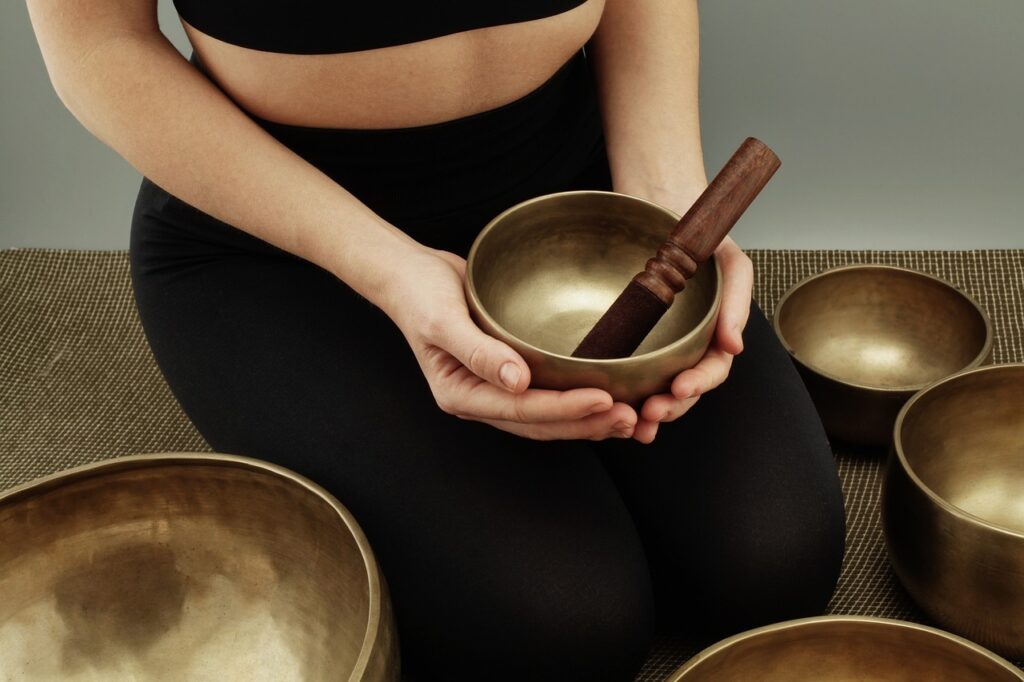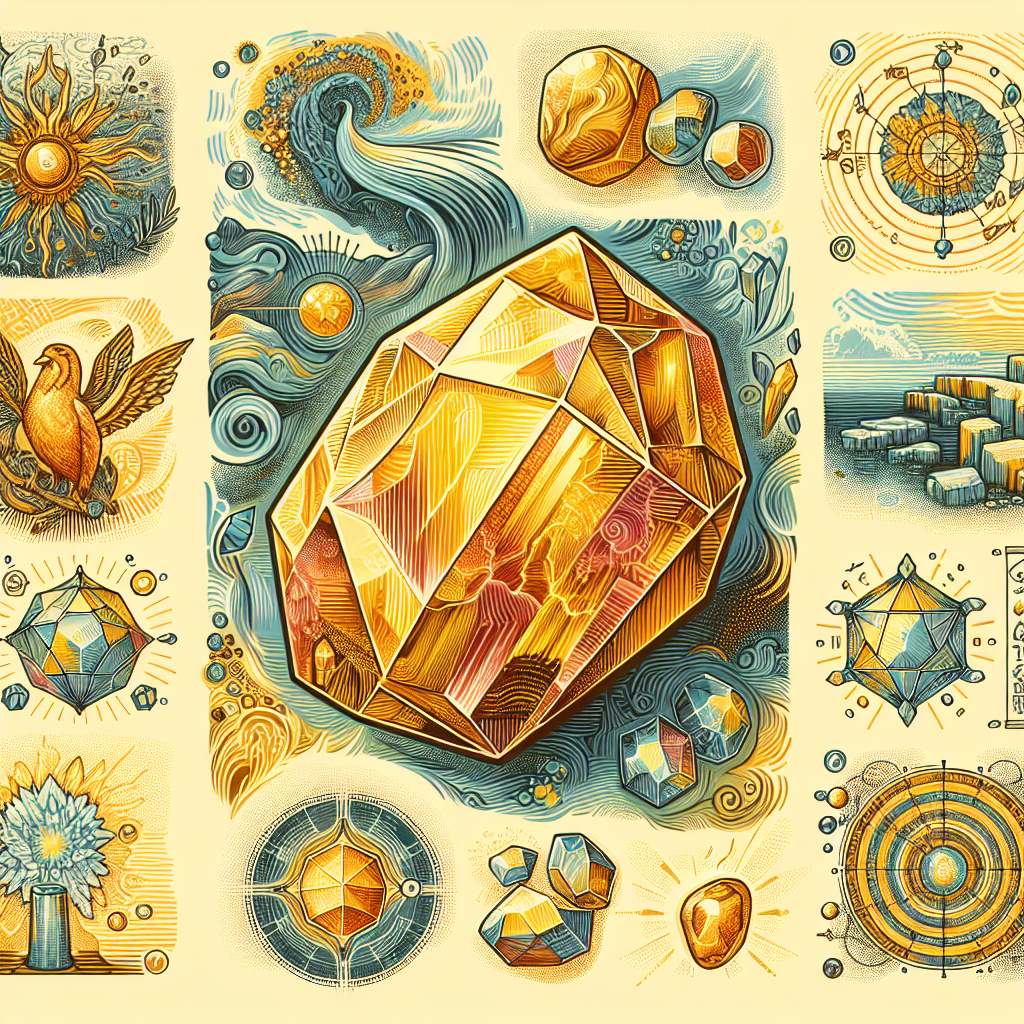
If you’re new to the world of gemstones and looking to embark on an exciting journey, then this beginner’s guide to exploring Yellow Quartz is just for you. In this comprehensive guide, we will take a closer look at the mesmerizing world of yellow quartz and its vibrant counterpart, lemon quartz. From their stunning aesthetics to their unique metaphysical properties, this article will serve as your go-to resource to understand and appreciate the beauty and significance of these mesmerizing gemstones. So, get ready to embark on a captivating exploration of yellow quartz and all that it has to offer.
What is Yellow Quartz?
Yellow Quartz is a stunning variety of quartz that exhibits a beautiful golden hue. It is a captivating gemstone that has gained popularity for its vibrant color and various metaphysical properties. Whether you are a gemstone enthusiast or simply curious about the world of crystals, Yellow Quartz is definitely worth exploring. In this comprehensive guide, we will delve into the composition, properties, varieties, history, and uses of Yellow Quartz. So, sit back, relax, and let’s embark on a journey to uncover the fascinating world of Yellow Quartz.
Overview of Yellow Quartz
Yellow Quartz, also known as Citrine, is a type of quartz that belongs to the silicate mineral family. It gets its mesmerizing golden color from traces of iron in its crystal structure. This vibrant gemstone has been valued for centuries for its beauty and healing properties. Yellow Quartz can range in color from pale yellow to deep golden and is known for its transparency and brilliance. Its popularity and demand have led to its widespread availability in the market, making it accessible to gemstone lovers all around the world.
Composition and Formation of Yellow Quartz
Yellow Quartz is primarily composed of silicon dioxide (SiO2), the same chemical composition as other varieties of quartz. However, it is the presence of iron impurities that give Yellow Quartz its distinct yellow coloration. The process of Yellow Quartz formation begins deep within the Earth’s crust, where silica-rich fluids interact with igneous rocks. Over millions of years, these fluids crystallize and transform into beautiful Yellow Quartz crystals. The intricate molecular arrangement of Yellow Quartz gives it its unique properties, both physical and metaphysical.
Properties of Yellow Quartz
To fully appreciate the beauty and significance of Yellow Quartz, it is essential to understand its properties. From its physical attributes to its metaphysical qualities, Yellow Quartz possesses a diverse range of characteristics that make it a captivating gemstone.
Physical Properties of Yellow Quartz
Yellow Quartz exhibits several physical properties that contribute to its allure. It has a hardness of 7 on the Mohs scale, making it a durable gemstone suitable for everyday wear. Its crystal structure is hexagonal, with six-sided prismatic formations. The transparency of Yellow Quartz can vary, with some specimens being nearly transparent and others showing slight cloudiness or inclusions. When faceted, Yellow Quartz reflects light beautifully, enhancing its radiant golden color and sparkle.
Metaphysical Properties of Yellow Quartz
In addition to its visual appeal, Yellow Quartz is renowned for its metaphysical properties. It is often associated with abundance, prosperity, and positive energy. Yellow Quartz is believed to activate the Solar Plexus Chakra, which is located above the navel and is associated with personal power, confidence, and manifestation. It is said to bring clarity of mind, boost creativity, and attract wealth and success. Many individuals use Yellow Quartz for meditation and energy healing purposes to tap into its uplifting and empowering vibrations.

Different Varieties of Yellow Quartz
Yellow Quartz encompasses various sub-varieties, each with its own unique characteristics and charm. Let’s explore some of the most popular and intriguing varieties of Yellow Quartz:
Citrine – The Golden Yellow Quartz
Citrine is the most widely known variety of Yellow Quartz. Its name is derived from the French word “citron,” meaning lemon, due to its vibrant golden color. Citrine is highly sought after for its warm and radiant hues, ranging from light yellow to deep amber. It is believed to carry the energy of the sun, bringing warmth, joy, and abundance into one’s life. Citrine is often used in jewelry and is cherished for its beauty as well as its metaphysical properties.
Smoky Quartz – The Translucent Yellow Quartz
Smoky Quartz is another variety of Yellow Quartz that exhibits a captivating translucent golden hue. It is known for its unique smoky brown or gray color, which is caused by natural irradiation. Smoky Quartz is believed to possess grounding and protective energies. By connecting with the Earth’s energies, it can help dispel negativity, promote emotional balance, and alleviate stress and anxiety. The combination of its golden hue and smoky appearance adds a touch of mystique and allure to this variety of Yellow Quartz.
Amethyst Quartz – The Purple Yellow Quartz
Amethyst Quartz, also referred to as Ametrine, is a remarkable variety that showcases both the enchanting purple of Amethyst and the vibrant yellow of Citrine. This unique gemstone is a captivating blend of colors, ranging from light lavender to deep purple and golden yellow. Amethyst Quartz is believed to combine the properties of both Amethyst and Citrine, making it a powerful crystal for spiritual growth, clarity of mind, and manifesting positive change. Its eye-catching color combination and energetic properties make it a desirable stone for both jewelry and metaphysical purposes.
Yellow Quartz in History and Culture
Throughout history, Yellow Quartz has held a significant place in various cultures and civilizations. Let’s take a journey back in time to explore the historical and cultural significance of Yellow Quartz.
Yellow Quartz in Ancient Civilizations
Yellow Quartz has been admired by ancient civilizations for centuries. The ancient Egyptians and Romans adorned their jewelry and ceremonial objects with this vibrant gemstone. They believed that Yellow Quartz carried the power of the sun god, Ra, symbolizing wealth, vitality, and divine energy. In ancient China, Yellow Quartz was highly valued for its association with prosperity and used to create intricate carvings and statues. These historical associations reflect the enduring appeal and reverence for Yellow Quartz throughout different cultures and time periods.
Symbolism and Uses of Yellow Quartz in Different Cultures
Yellow Quartz holds symbolic meanings in various cultures. In many traditions, it is regarded as a stone of abundance, wealth, and positive energy. In Feng Shui, Yellow Quartz is believed to attract abundance and prosperity, making it a popular choice for home decor and wealth-enhancing rituals. In the Native American and Indigenous cultures, Yellow Quartz is considered a sacred stone with spiritual significance. It is often used in rituals and ceremonies to invoke the power of the sun and enhance spiritual connections. These cultural interpretations highlight the diverse ways in which Yellow Quartz has been revered and utilized throughout history.

Where to Find Yellow Quartz
Yellow Quartz deposits can be found in various locations around the world. Let’s explore some of the notable regions known for their Yellow Quartz deposits.
Yellow Quartz Deposits around the World
Yellow Quartz is found in abundance in several countries, including Brazil, Madagascar, Russia, Bolivia, and the United States. Brazil is one of the leading producers of Yellow Quartz, particularly Citrine, with vast deposits in the states of Rio Grande do Sul and Minas Gerais. Madagascar is renowned for its high-quality Citrine and Ametrine, showcasing rich and vibrant hues. Russia, Bolivia, and the United States also have significant Yellow Quartz deposits, contributing to the global availability of this captivating gemstone.
Famous Yellow Quartz Mines
Several famous mines have played a vital role in the production of Yellow Quartz. The Anahi Mine in Bolivia is recognized for its exceptional Ametrine, displaying a stunning combination of purple and yellow colors. The Marabá Mine in Brazil is renowned for its Citrine, producing large, high-quality crystals coveted by collectors. Other significant Yellow Quartz mines include the Thunder Bay Amethyst Mine in Canada, known for its Amethyst Quartz, and the Smokey Hawk Mine in the United States, famous for its exquisite Smoky Quartz.
Identifying and Evaluating Yellow Quartz
When seeking out Yellow Quartz, it is essential to know how to identify and evaluate its authenticity and quality. Let’s explore the visual characteristics and testing methods for Yellow Quartz.
Visual Characteristics of Yellow Quartz
Yellow Quartz can be visually identified by its distinct golden coloration. It typically exhibits a vibrant yellow hue, ranging from light lemon to deep amber. The transparency of Yellow Quartz can vary, with some stones being nearly transparent and others showing slight cloudiness or inclusions. Its crystal structure is hexagonal, featuring six-sided prismatic formations. When observing Yellow Quartz, look for its brilliance, clarity, and depth of color, as these factors contribute to its overall beauty and value.
Testing Authenticity and Quality of Yellow Quartz
To determine the authenticity and quality of Yellow Quartz, various testing methods can be employed. Gemologists often use tools such as a refractometer to measure the refractive index of the gemstone. Yellow Quartz typically has a refractive index of around 1.54-1.55. Additionally, spectroscopy techniques can be used to analyze the gemstone’s elemental composition and identify any treatment or enhancement. It is advisable to seek the assistance of a certified gemologist or reputable jeweler when evaluating the authenticity and quality of Yellow Quartz.

Common Uses for Yellow Quartz
Yellow Quartz has a wide range of practical and decorative applications due to its captivating beauty and durability. Let’s explore some of the common uses for Yellow Quartz.
Jewelry and Accessories
Yellow Quartz, especially Citrine, is highly coveted for its vibrant color and can be found in a variety of jewelry pieces. From earrings and necklaces to bracelets and rings, Yellow Quartz jewelry adds a touch of elegance and warmth to any outfit. Its versatility and affordability make it a popular choice for both contemporary and vintage-inspired designs. Additionally, Yellow Quartz is often used as cabochons, beads, and faceted gemstones in jewelry-making, allowing for endless creative possibilities.
Ornamental and Decorative Purposes
Beyond jewelry, Yellow Quartz is also utilized for ornamental and decorative purposes. Its eye-catching color and brilliance make it an excellent choice for sculptures, carvings, and figurines. Yellow Quartz carvings often depict symbols of wealth, abundance, and prosperity, aligning with its metaphysical properties. In home decor, Yellow Quartz can be incorporated into crystal grids, fountains, and geode formations to create a serene and uplifting ambiance. Its versatility and aesthetic appeal make it a versatile gemstone for various decorative applications.
Caring for Yellow Quartz
To ensure the longevity and radiance of your Yellow Quartz gemstones, proper care and maintenance are essential. Let’s explore some tips for cleaning, storing, and preventing damage to your Yellow Quartz.
Cleaning and Storing Yellow Quartz
To clean your Yellow Quartz gemstones, gently rinse them under lukewarm water and lightly scrub them with a soft-bristle brush or a cloth. Avoid using harsh chemicals or ultrasonic cleaners, as they can damage the gemstone’s surface. After cleaning, pat the stones dry with a soft cloth and store them in a fabric-lined jewelry box or a pouch to prevent scratches and protect them from exposure to sunlight and other gemstones.
Preventing Damage and Enhancing Longevity
To preserve the beauty and longevity of Yellow Quartz, it is essential to handle it with care. Avoid subjecting your Yellow Quartz gemstones to extreme temperature changes, as this can cause thermal shock and lead to fractures. Additionally, protect your gemstones from exposure to chemicals, perfumes, and cosmetics, as they can dull or damage the surface of the stone. By following these simple precautions and regularly cleaning and storing your Yellow Quartz gemstones, you can ensure that they remain vibrant and radiant for years to come.

Yellow Quartz vs. Lemon Quartz
Yellow Quartz and Lemon Quartz are both stunning gemstones that showcase captivating yellow hues. While they may appear similar, there are key differences between the two. Let’s compare Yellow Quartz and Lemon Quartz in terms of color, physical properties, and metaphysical properties.
Differences in Color and Hue
Yellow Quartz and Lemon Quartz differ primarily in their color and hue. Yellow Quartz, also known as Citrine, exhibits a golden yellow color, reminiscent of the warm, vibrant hues of a summer sunset. On the other hand, Lemon Quartz showcases a lighter, more lemony yellow color, resembling the refreshing zest of a ripe lemon. The distinction in color between Yellow Quartz and Lemon Quartz allows individuals to select gemstones that align with their personal preferences and desired aesthetic.
Physical and Metaphysical Properties Comparison
Physically, Yellow Quartz and Lemon Quartz share similar properties since they both belong to the quartz family. They have a hardness of 7 on the Mohs scale, making them relatively durable gemstones for everyday wear. Metaphysically, both Yellow Quartz and Lemon Quartz are believed to possess energizing and uplifting qualities. They are associated with mental clarity, positivity, and abundance. However, due to the difference in color and hue, Yellow Quartz is often associated with activating the Solar Plexus Chakra, while Lemon Quartz is linked to enhancing concentration, focus, and self-expression.
Interesting Facts about Yellow Quartz
Yellow Quartz is a gemstone filled with fascinating qualities and intriguing facts. Let’s uncover some interesting tidbits about Yellow Quartz:
Yellow Quartz and the Solar Plexus Chakra
Yellow Quartz, particularly Citrine, is often associated with the Solar Plexus Chakra, which is located above the navel. It is believed that wearing or meditating with Yellow Quartz can help balance and activate this energy center, promoting self-confidence, personal power, and manifestation. Yellow Quartz resonates with the vibrant energy of the sun, stimulating vitality, and magnifying one’s inner light.
Famous Yellow Quartz Gemstones
Throughout history, several famous gemstones featuring Yellow Quartz have gained notable recognition. For instance, the Bahia Emerald, a colossal gemstone from Brazil, boasts vivid green and yellow hues, with Yellow Quartz contributing to its captivating beauty. The “O’Dwyer Vetch” Citrine, a jaw-dropping 20-carat gemstone, showcases the brilliance and splendor of Yellow Quartz. These famous Yellow Quartz gemstones serve as testaments to the enduring allure and allure of this remarkable gemstone.
In conclusion, Yellow Quartz, with its mesmerizing golden hue and diverse properties, captivates the hearts of gemstone enthusiasts and crystal lovers alike. From its physical beauty to its metaphysical significance, Yellow Quartz offers numerous opportunities for exploration and appreciation. Whether you are drawn to its vibrant color, seek its energetic properties, or simply appreciate its historical and cultural significance, Yellow Quartz is sure to leave a lasting impression. So, embrace the enchantment of Yellow Quartz and let its radiant energy fill your life with abundance, positivity, and joy.


